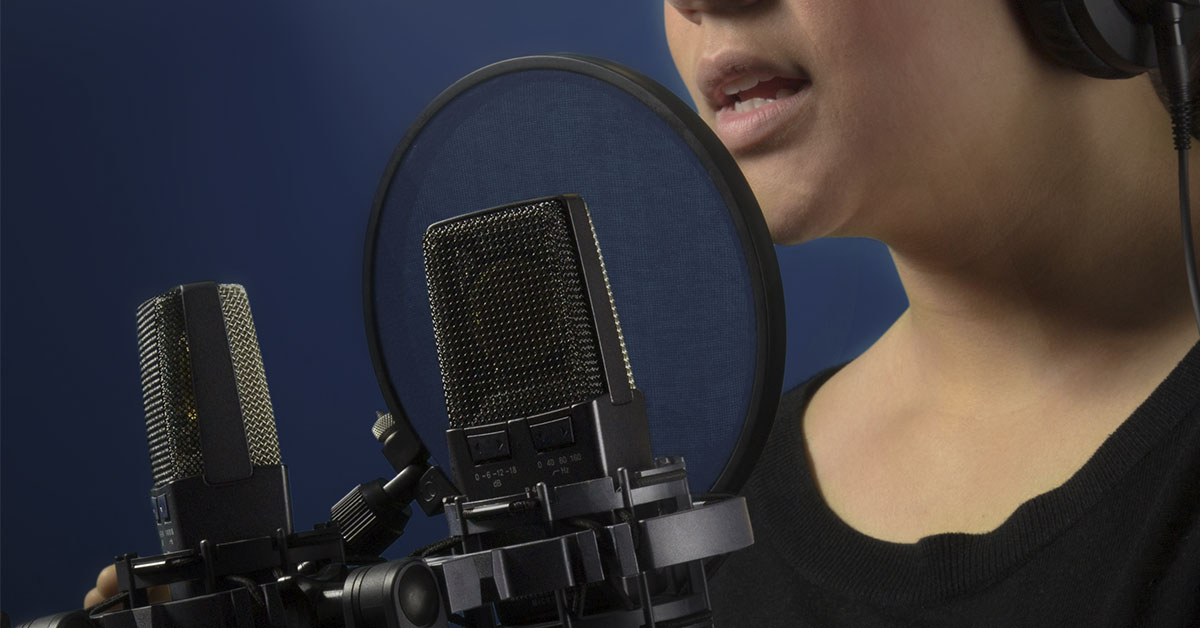Our friends at AKG share the history and evolution of the C-Series condenser microphones - from the C12 to the modern C414.
Written by AKG
For over 70 years, AKG has been one of the leading microphone manufacturers worldwide. Many of its products, such as the C12 large-diaphragm condenser, the D112 large-diaphragm dynamic, and the C414 large-diaphragm condenser have become industry standards
In this series of guest blog articles, we're going to look at the history and technology behind some of AKG's most popular microphones. We'll cover topics such as polar patterns, best applications for different microphone types, and how to choose a mic that meets your unique needs. Today, we’ll explore the evolution of the C-Series, perhaps AKG's most influential family of microphones.
AKG - The Early Years
AKG was founded in 1947 in Vienna, Austria, and it didn’t take long for its microphones to become popular with performers and broadcasters. By the early ‘50s, the company was vying with arch-rival Neumann for supremacy in the mic business.
“It was like Coke and Pepsi at the time,” says JT Taylor, Senior Application Engineer at HARMAN Professional Solutions. “AKG and Neumann were making microphones that were extremely accurate and brought a lot of fidelity to the recording industry in the U.S."
It was around that time that AKG produced one of the most revered high-quality condenser mics ever, the C12, which featured the new CK12 capsule. It was one of the first remote-controlled, multi-pattern condenser mics to hit the market.

When the AKG C12 was introduced in 1953, its fidelity was unprecedented. [Photo provided by AKG]
When the C12 was first released, it was mainly used for capturing classical performances and broadcast applications, but it quickly found its way into recording studios as word of its sound quality spread. When used on vocals, The C12 captured an airy high end that was exceptionally flattering. Michael Jackson, Frank Sinatra, Elvis Presley, and Tom Petty are just some of the legendary artists who recorded vocals with a C12.
AKG manufactured the original C12 for only ten years, from 1953 to 1963. Today, original C12s are rare and extraordinarily valuable. In 1962, AKG created a second version, the C12A, which featured the same CK12 capsule, but a different tube and transformer, and a smaller housing.
The magic number - The AKG C414
In 1971, AKG introduced a new microphone with the same capsule and similar shape to the C12A, but featured solid-state electronics instead of a tube. The new C414 was also extremely versatile, thanks to switchable polar patterns. In addition to recording using a cardioid pattern with the capsule pointed directly at the source, you could put the mic in omni (the pattern that picks up evenly all around) and record a vocal group standing around the mic. You could set it to Figure-8 (a bi-directional pattern where the mic picks up equally from front and back but rejects sounds coming from the sides) as part of a stereo pair using the MS (mid-side) technique. You could also use its supercardioid or hypercardioid settings when you needed an especially narrow pickup to avoid bleed from other instruments.
“It was an iteration of the C12A, in that it used the same capsule and had the same rectangular housing,” explains Taylor, “but it only had 4 polar patterns and wouldn’t get back to the 9 patterns like the original C12 until a later design.”
Since its original release, AKG has produced quite a few variations of the C414, some featuring CK12 capsules, and some not. The current models, the C414 XLS and C414 XLII are the most versatile C-Series mics yet. Each offers nine different polar patterns, several high-pass filter choices (for rolling off unwanted low-end pickup) and pad switches that cut the input level allowing for its use on extremely loud sources such as drums and guitar cabinets.

The C414 XLII offers sonic response reminiscent of the original C12.
“The C414 XLII version differs from the C414 XLS version in one major respect – the capsule,” Taylor points out. “The C414 XLII's slight presence boost and impressive spatial reproduction are both similar to the legendary AKG C12 microphone from 1953.”
Lean and mean - C314 and C214 Condenser Microphones
The AKG C-Series also includes two other variations on the C414—the C314 and C214—which provide similar sound, but with fewer features and a lower price. We’ll look in detail at the 314 in a future column, but for now, we’ll focus on the C214, the most affordable of the C-Series mics.
“It only has one polar pattern—cardioid—but it has the same 1-inch diaphragm and capsule as the C414 XLII, making it an excellent choice as a vocal mic,” explains Taylor. “It also features an 80Hz high-pass filter and a -20dB pad, so that you can record loud sources. I put 214s on guitar amps all the time, both onstage or in the studio, and it sounds great. And because of the pad, you can use it on drums, too, without overloading the mic.”

The C214 is the most affordable C-Series option, and offers performance close to the C414-XKII.
Like other C-Series mics, the 214 can be purchased in matched pairs, which is ideal for stereo miking of drum overheads, acoustic instruments and more.
“With every pair, we send the lab measurements of the frequency response, signed off on by a technician, so that you know they’re closely matched,” Taylor says. “You could also buy two separate 214s, but they're not going to be as matched as the two that you buy in a stereo pair.”
Although it has fewer features than the C414 XLS, C414 XLII or C314, the C214 is an extremely affordable way to capture exceptional clarity and detail at an affordable price.
We hope you enjoyed learning about the evolution of the iconic AKG C-Series. In our next article, we’ll discuss the AKG C314 and take a closer look at polar patterns.






































































































































